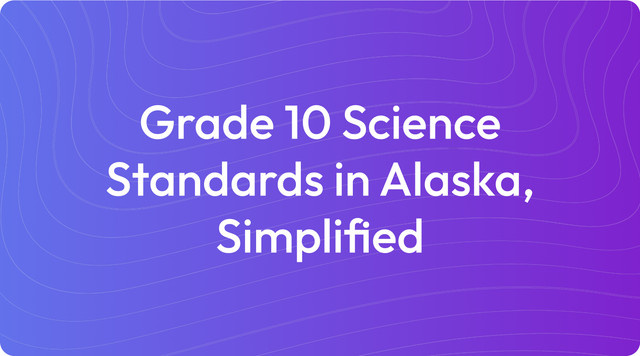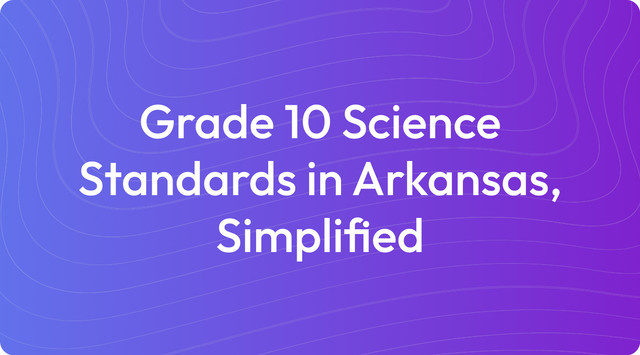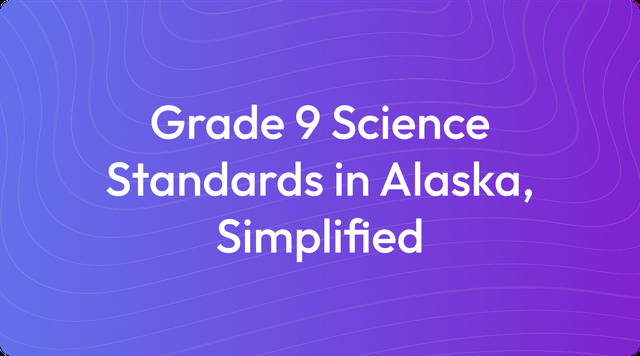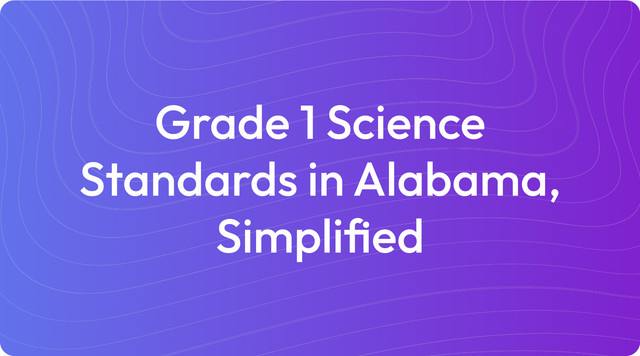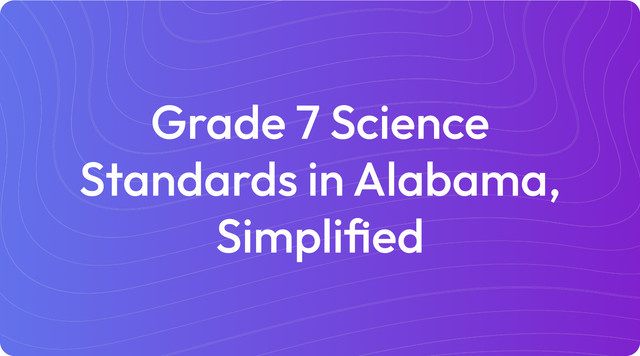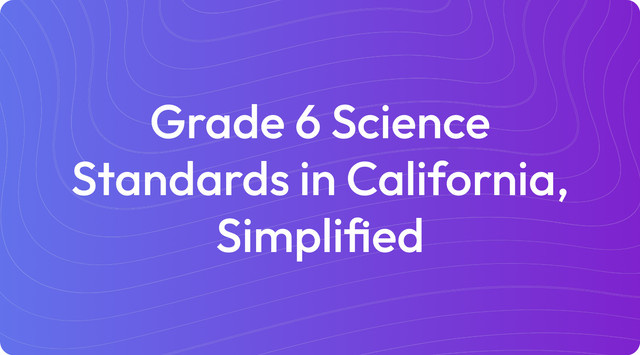Grade 7 Science Standards in Alaska, Simplified
Grade 7 science in Alaska covers atomic structure, ecosystems, planet systems, and waves. Learn the key points—read more on TeachShare!
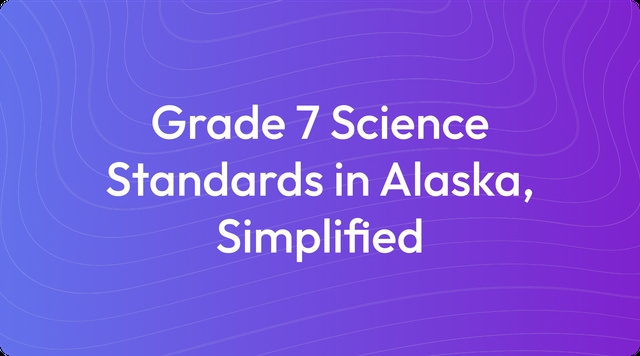
Education standards form the foundation of curriculum planning, but understanding how to apply them can be a challenge. We know that teachers and administrators need straightforward resources to connect standards to classroom practice. Let's look at what standards are and how they guide instruction.
Education standards are learning goals that outline what students should know and be able to do at each grade level. For teachers, they provide a clear framework for instruction without dictating specific teaching methods or materials. For example, the Grade 7 Science Standards in Alaska specify that students should be able to develop models of atomic composition, but leave the choice of activity, like building models of water molecules, up to the educator.
What Are Grade 7 Science Standards in Alaska?
The Grade 7 Science Standards in Alaska, adapted from the Next Generation Science Standards (NGSS), are designed to build a deep understanding across key scientific fields. They focus on Physical Science, Life Science, Earth and Space Science, and Engineering Design, with an emphasis on hands-on investigation and real-world problem-solving. Here are the core standards for seventh-grade students:
1. Physical Science (PS): Forces, Energy, and Chemistry
MS-PS1-1: Develop models to describe the atomic composition of simple molecules and extended structures.
MS-PS1-4: Develop a model that predicts and describes changes in particle motion, temperature, and state of a substance when thermal energy is added or removed.
MS-PS2-1: Apply Newton’s Third Law to design a solution to a problem involving the motion of two colliding objects.
MS-PS3-3: Apply scientific principles to design, construct, and test a device that minimizes or maximizes thermal energy transfer.
2. Life Science (LS): Growth, Reproduction, and Ecosystems
MS-LS1-4: Use an argument based on evidence for how the body is a system of interacting subsystems composed of groups of cells.
MS-LS1-5: Construct a scientific explanation based on evidence for how environmental and genetic factors influence the growth of organisms.
MS-LS2-1: Analyze and interpret data to provide evidence for the effects of resource availability on organisms and populations in an ecosystem.
MS-LS2-3: Develop a model to describe the cycling of matter and flow of energy among living and nonliving parts of an ecosystem.
3. Earth and Space Science (ESS): Earth’s Processes and Space Systems
MS-ESS2-1: Develop a model to describe the cycling of Earth’s materials and the flow of energy that drives this process.
MS-ESS2-2: Construct an explanation based on evidence for how geoscience processes have changed Earth’s surface over time.
MS-ESS3-5: Ask questions to clarify evidence of the factors that have caused the rise in global temperatures over the past century.
4. Engineering Design (ETS): Problem-Solving
MS-ETS1-1: Define the criteria and constraints of a design problem to ensure a successful solution.
MS-ETS1-2: Evaluate competing design solutions to determine how well they meet the criteria and constraints of the problem.
MS-ETS1-4: Develop a model to generate data for iterative testing and modification of a proposed object, tool, or process.
The framework for these standards is guided by the foundational Next Generation Science Standards and has been adapted into the specific Science Standards for Alaska. This approach ensures learning is both rigorous and directly relevant to students in Alaska.
Key Tested Standards
The Alaska Science Assessment is administered in grades 5, 8, and 10, so it’s helpful to know which standards are most likely to appear on state tests. The key tested standards for middle school focus on foundational concepts in Physical Science, Life Science, Earth and Space Science, and Engineering Design. These standards assess your students’ ability to analyze, model, investigate, and solve problems using hands-on and real-world applications.
1. Physical Science (PS): Forces, Energy, and Chemistry
MS-PS1-1: Develop models to describe the atomic composition of simple molecules and extended structures.
MS-PS1-4: Develop a model that predicts and describes changes in particle motion, temperature, and state of a substance when thermal energy is added or removed.
MS-PS2-1: Apply Newton’s Third Law to design a solution to a problem involving the motion of two colliding objects.
MS-PS3-3: Apply scientific principles to design, construct, and test a device that minimizes or maximizes thermal energy transfer.
2. Life Science (LS): Organisms, Growth, and Ecosystems
MS-LS1-5: Construct an explanation based on evidence for how environmental and genetic factors influence the growth of organisms.
MS-LS2-1: Analyze and interpret data to provide evidence for the effects of resource availability on organisms and populations in an ecosystem.
MS-LS2-3: Develop a model to describe the cycling of matter and flow of energy among living and nonliving parts of an ecosystem.
3. Earth and Space Science (ESS): Earth’s Processes and Systems
MS-ESS2-1: Develop a model to describe the cycling of Earth’s materials and the flow of energy that drives this process.
MS-ESS2-2: Construct an explanation based on evidence for how geoscience processes have changed Earth’s surface over time.
MS-ESS3-5: Ask questions to clarify evidence of the factors that have caused the rise in global temperatures over the past century.
4. Engineering Design (ETS): Problem-Solving
MS-ETS1-1: Define the criteria and constraints of a design problem to ensure a successful solution.
MS-ETS1-2: Evaluate competing design solutions to determine how well they meet the criteria and constraints.
MS-ETS1-4: Develop a model to generate data for iterative testing and modification of a design.
This guide is based on information from the following sources:
Example Learning Objectives for Unit Planning
Learning objectives translate broad standards into specific, measurable goals for your students, written in clear, student-friendly language. They clarify what students will be able to do by the end of a lesson. Here are some examples aligned with the Grade 7 Science Standards in Alaska:
Physical Science (PS): Forces, Energy, and Chemistry
I can create a model to show how atoms combine to form molecules, like water or carbon dioxide.
I can explain how adding or removing heat changes the state of matter, like melting ice or boiling water, and describe how particles move during these changes.
I can investigate and demonstrate how forces, like pushes and pulls, affect the motion of objects when they collide.
I can design and test a container or structure that minimizes heat transfer, such as keeping liquids hot or cold.
Life Science (LS): Growth, Reproduction, and Ecosystems
I can explain how environmental factors, like sunlight or water, and genetic factors influence the growth of plants and animals.
I can analyze data to show how the availability of resources, like food or water, affects populations in an ecosystem.
I can create a model to show how energy flows and matter cycles through an ecosystem, including producers, consumers, decomposers, and the environment.
I can describe how the systems in the human body (like the circulatory and respiratory systems) work together to keep the body functioning.
Earth and Space Science (ESS): Earth’s Processes and Systems
I can create a model to show how rocks change over time through the rock cycle, using processes like melting, erosion, or pressure.
I can explain how geologic processes, like glaciers or volcanic activity, have shaped Earth’s surface over time.
I can analyze evidence, like temperature data or greenhouse gas graphs, to explain the causes of global temperature changes over the past century.
Engineering Design (ETS): Problem-Solving
I can identify a problem (like building a structure to withstand wind or earthquakes) and explain the criteria and constraints for solving it.
I can design and test multiple solutions to a problem, like building a bridge or a water filter, and compare which one works best.
I can improve my design by testing it, identifying weaknesses, and making changes to make it better.
Key Changes & Updates
The recent updates to the Grade 7 Science Standards in Alaska place a greater emphasis on hands-on, inquiry-based learning. The curriculum now integrates engineering design principles, encouraging students to move beyond theory and actively solve real-world challenges. This means your students will be defining problems, designing and testing solutions, and improving their creations, whether it's building an insulated container or an earthquake-resistant structure. This approach is designed to foster creativity and practical problem-solving skills.
To make learning more tangible, the standards also connect scientific concepts directly to Alaska’s unique environment. You can now ground lessons in local examples, like exploring how glaciers have shaped the landscape or investigating the dynamics of a boreal forest ecosystem. There is also a stronger focus on using models to help students visualize complex ideas, from molecular structures to the flow of energy. These updates encourage cross-disciplinary learning by asking students to analyze data and write evidence-based arguments, preparing them with skills applicable across all subjects.
Create with TeachShare
We understand that turning these standards into engaging classroom materials takes time and effort. Our platform is designed to support you by making it easier to develop lessons that are aligned with Alaska's specific requirements. We help you build activities, assessments, and differentiated resources that meet the needs of every student in your classroom. Start creating standards-aligned instructional resources with TeachShare now.
Frequently Asked Questions
How can I make Grade 7 science relevant to my students in Alaska?
The standards are designed to connect directly to Alaska’s unique environment, which helps make science more meaningful for students. You can ground your lessons in local contexts by exploring topics like the impact of glaciers and earthquakes on Alaska's geography or the unique food webs in tundra and boreal forest ecosystems. Discussing the effects of natural resource extraction also provides a powerful, relevant connection to the world around them.
What are some examples of hands-on activities for Grade 7 science?
The standards support a wide range of hands-on activities to keep students engaged. Here are a few ideas you can adapt for your classroom:
- Physical Science: Have students build models of simple molecules like water to visualize atomic composition.
- Life Science: Ask students to create food web models that show how energy flows through a local ecosystem.
- Earth Science: Use hands-on materials to simulate the rock cycle or create small-scale models to show how glaciers shape landscapes.
- Engineering Design: Challenge students to design and test a container that minimizes heat transfer.
How are students assessed under these standards?
Assessment goes beyond traditional tests and focuses on a student's ability to apply scientific concepts. You can evaluate student understanding through a variety of methods, including:
- Investigations: Students can demonstrate their knowledge by conducting experiments, like testing how different forces affect an object's motion.
- Models: Students can create models to explain concepts like the rock cycle, food webs, or molecular structures.
- Data Analysis: You can assess students by having them interpret graphs and data sets, such as those showing population changes or climate trends.
- Design Projects: Students can work on projects where they design, test, and refine a solution to a real-world problem, like building a simple water filter.
How do the Grade 7 standards prepare students for high school and beyond?
These standards build a strong foundation for more advanced science courses and future STEM careers. By introducing fundamental concepts in middle school, students are better prepared for the challenges of high school science. For example, learning about atomic structure and chemical reactions prepares them for chemistry, while understanding ecosystems is essential for biology. The problem-solving skills developed through engineering design are valuable for any future path they choose.
How is engineering integrated into the science curriculum?
Engineering is woven directly into the science standards, not taught as a separate topic. Students learn to approach problems like an engineer by following a practical design process. This process encourages them to identify a problem, design a potential solution, and then test and improve their creation based on the results. For example, students might be asked to design a structure that can withstand a simulated earthquake, testing and refining their model to make it stronger.
Answer


